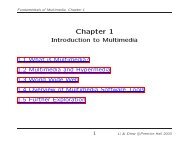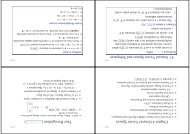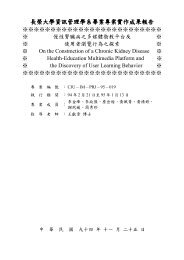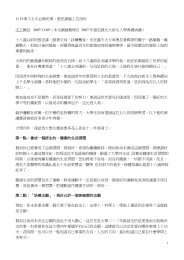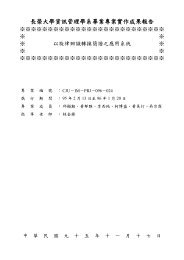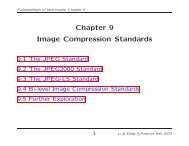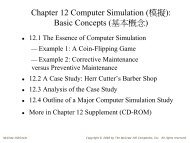Fundamental Concepts in Video
Fundamental Concepts in Video
Fundamental Concepts in Video
You also want an ePaper? Increase the reach of your titles
YUMPU automatically turns print PDFs into web optimized ePapers that Google loves.
<strong>Fundamental</strong>s of Multimedia, Chapter 5<br />
PAL <strong>Video</strong><br />
• PAL (Phase Alternat<strong>in</strong>g L<strong>in</strong>e) is a TV standard widely<br />
used <strong>in</strong> Western Europe, Ch<strong>in</strong>a, India, and many other parts<br />
of the world.<br />
• PAL uses 625 scan l<strong>in</strong>es per frame, at 25 frames/second,<br />
with a 4:3 aspect ratio and <strong>in</strong>terlaced fields.<br />
(a) PAL uses the YUV color model. It uses an 8 MHz channel and<br />
allocates a bandwidth of 5.5 MHz to Y, and 1.8 MHz each to U and<br />
V. The color subcarrier frequency is f sc ≈ 4.43 MHz.<br />
(b) In order to improve picture quality, chroma signals have alternate<br />
signs (e.g., +U and -U) <strong>in</strong> successive scan l<strong>in</strong>es, hence the name<br />
“Phase Alternat<strong>in</strong>g L<strong>in</strong>e”.<br />
(c) This facilitates the use of a (l<strong>in</strong>e rate) comb filter at the receiver<br />
— the signals <strong>in</strong> consecutive l<strong>in</strong>es are averaged so as to cancel the<br />
chroma signals (that always carry opposite signs) for separat<strong>in</strong>g Y<br />
and C and obta<strong>in</strong><strong>in</strong>g high quality Y signals.<br />
20 Li & Drew c○Prentice Hall 2003



